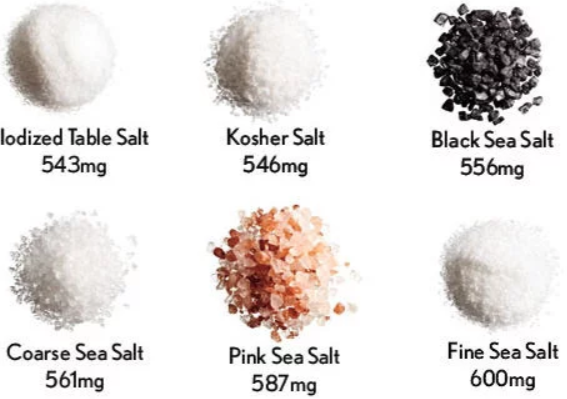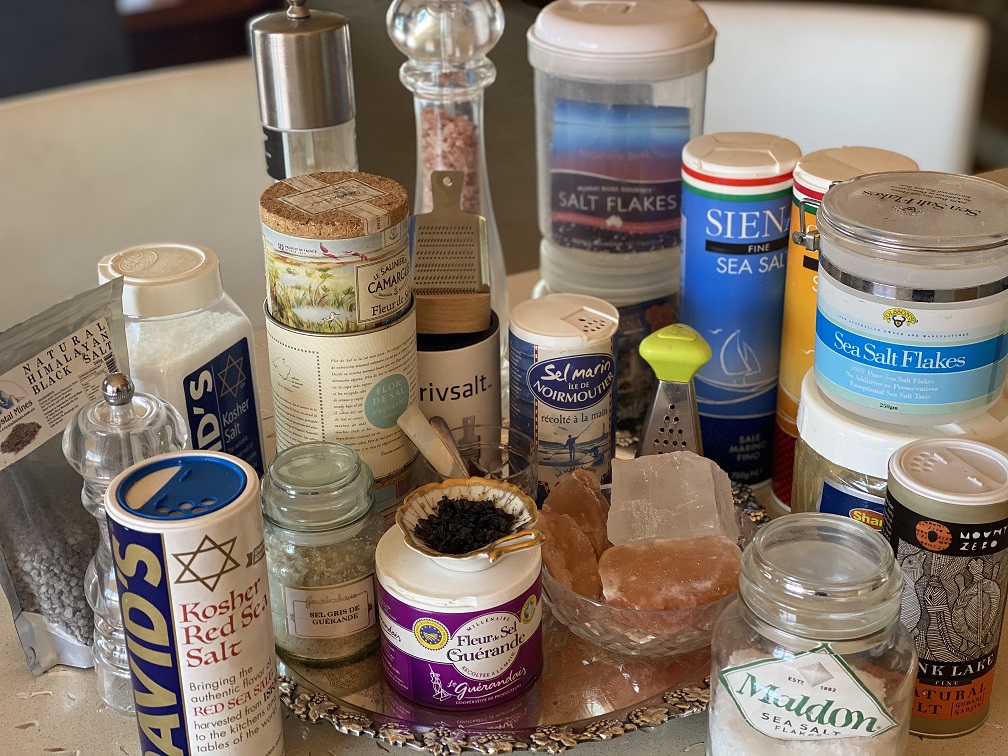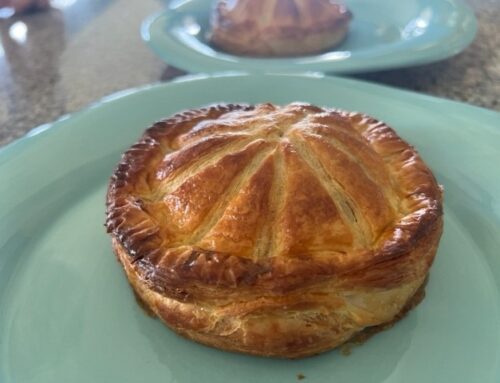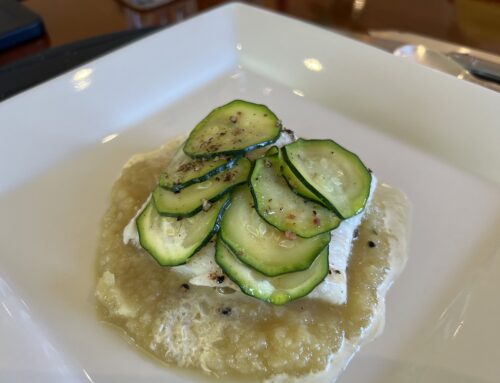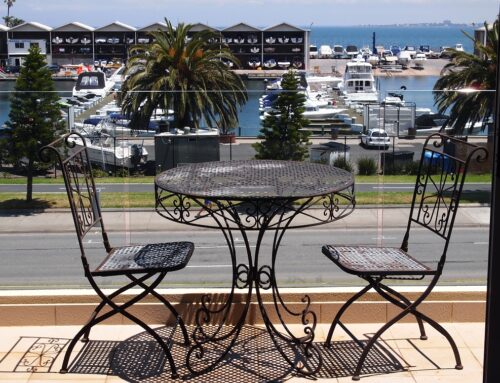Salt has been used since ancient times to preserve food, such as salmon gravlax, and in the koshering of meat; it is still used so today. Unfortunately, it is also a most misunderstood food. Like a lot of other foods, such as fat, it went out of favour last century as it was linked to high blood pressure and heart disease. This century, as these health contentions are questioned and disproved, salt is back in favour for its natural minerals and as a very valuable aid to flavouring our food, something chefs have always known!
Today, for those of us cooking at home and eating a real food diet, with fresh, seasonal and local foods, as we teach at Cooking on the Bay, we enjoy more nutritious food but also food with less salt. We are not getting the extra salt from the commercial, highly processed, prepared and salted foods bought in the supermarkets, so, we need to add salt to the food we cook. Salt is a flavour enhancer as well as giving numerous health benefits.
Salt’s main role in cooking is to enhance the flavour in our food. Salt amplifies and deepens the flavour of our food, affects its taste, plus it adds texture, giving a crunch to the tongue. Salt plays a large role in the enjoyment of our food.
Salt improves the tenderness and juiciness of meats and vegetables; such as when you brine chicken, duck, turkey; salt reduces our perception of bitterness, such as with bitter chocolate, it masks bitterness more effectively then sugar does. Add a pinch of salt to tonic water, grapefruit and lemon and the bitterness is reduced.
When we cook, we cook to bring out the best flavour in food and this adds to the pleasure we enjoy when we eat. Flavour is often forgotten in the home cooking process as home cooks focus on speed!
It is important to know the correct amount to add, which will vary from person to person, when to add it, before, during or after the cooking process and in what form, as a finer grain or as a sprinkle of finishing salt.
My pantry always has many varieties of salt and my salt collection is always available for use in cooking classes. Frequently we will have a discussion and tasting of the various salts on the table.
What is salt? Salt is a mineral, sodium chloride, one of the essential nutrients we need to survive. As it cannot be stored in the body, we need to consume it regularly. A good quality salt will have natural minerals and trace elements that are not found in a refined and processed ‘table’ salt.
All salt comes from the sea, either the above ground ocean or those giant pre-historic, underground ancient lakes and seas.
To produce salt, the water must be evaporated from the ocean seawater or from the brine made by pumping water into the rock deposits. Although all salt crystals are produced by evaporating water from a saltwater brine, the pace of evaporation will determine the shape those crystals take.
Rock salts are ‘mined’ by flooding salt deposits with water and then rapidly evaporating that water from the resulting brine. When salt is formed as a result of rapid evaporation in a closed container, such as a subterranean mine, the salt crystals become small, dense cubes, a granular salt.
Salt produced by slow, solar methods at the surface of an open container, such as a lake or sea-shore, will crystallise into light, hollow flakes. This is unrefined, or unprocessed sea salt.
After the water is gone, the remaining salt crystals can be processed in various ways.
Natural sea salt is the best salt to use
Salt should taste clean and fresh with a smell and taste of the sea; free from any unpleasant flavours.
It’s important to differentiate between a natural sea salt and commercial table salt. Natural salts come in their complete, whole form. Varieties like our famous Australian Murray River salt, Maldon sea salt, Kosher salt, Fleur de Sel, Himalayan salt and Celtic Sea Salt maintain all their natural elements and pack health benefits you simply don’t get from table salt. Take a look at the photo here and you will see the salt colours; look closely to see the different textures; some of the salts are fine, some are coarse, some flaky.
Sea salt – sea salt is a good everyday salt which is produced by rapidly boiling down ocean water in a closed vacuum. It contains a small amount of natural iodine and is much less refined than table salt. It comes in varying shapes and sizes, such as a fine salt with light hollow flakes or coarser crystals. Sea salt contains many beneficial, natural minerals and tastes better to most people.
Mediterranean Sea salt flakes are white, natural pyramid-shaped crystals harvested from the Mediterranean Sea. This delicate flake provides a delicate crunch making it ideal for seasoning, cooking, roasting, baking or as a garnish.
Specialty ‘Finishing’ sea salts: these are top quality salts like Fleur de Sel, and super-flaky salt like Maldon Sea salt. This is the sea salt that is left behind after the water has naturally evaporated. These salts are harvested using low-yield, labour intensive methods, of gradual, monitored evaporation that can take up to five years to complete. They are the upper echelon of salts and, because of their method of harvesting, usually by hand raking, they are costlier. It is their delightful texture which makes them special and so sprinkle them at the last minute and enjoy the crunch in your mouth. Select one with a pleasant texture, such as Fleur de Sel or Maldon salt for garnishing at the last moment.
Murray River Salt – Australian, pink salt flakes – natural and sustainable
Murray River Salt is my favourite salt, and I use it as both a finishing salt and in my cooking. We use it in the cooking classes at Cooking on the Bay and so all students have a chance to savour and enjoy its taste and flavour. I also especially love the fact that the production of this salt intercepts 200 tonnes of salt per day from entering our Murray River.
Murray River salt is produced at the Mourquong mitigation site, NSW, and is harvested by extracting salt from the ancient, underground, mineralised, saline aquifers of the Murray Darling basin. This Mourquong Salt Mitigation Basin is located 13 kilometres northwest of Mildura in New South Wales.
This pristine saline water source has been trapped underground for thousands of years and has not been exposed to the elements until it is pumped up for salt production. The pure mineralised brine travels through several canals before entering the crystallizing ponds. The brine is solar evaporated and crystallizes over the summer months.
The pale pink hue of the salt flakes is the result of the naturally occurring mineralised brine in the salt; they are particularly high in magnesium, calcium, and to a lesser degree, potassium, and iodine. The salt is completely natural, with no additives or preservatives, and free is from microplastics, herbicides, pesticides and air pollution.
Murray River Salt is an award-winning, premium product. The pink salt flakes are delicate, soft and almost fragile; they give a marvellous crunchy texture to food and a full flavour without the strong salty bitterness that most salts contain.
The production of this salt in their sustainable and environmentally friendly operation contributes to the successful management of the Australian vast salinity issue. The salt removal operation assists in preventing 200 tonnes of salt per day from entering the Murray River. This successful management of salinity in this region ensures water quality, plant growth, biodiversity and agricultural productivity remain, and that good quality water is available for human consumption.
Fleur de Sel de Camargue is one of my favourite French finishing salts. The consistency is light and flaky. Coming across a little crystal of Fleur de Sel in your food is a pleasure! It brings out the flavour of the food without dominating it with an overly salty taste. It is hand raked and harvested in the Camargue region of southern France where they hand rake only the premium, top layer of the salt bed. The young crystals bloom naturally on the surface of the salt evaporation ponds. The name Fleur de Sel comes from the aroma of violets that develop as the salt dries. This salt comes in a beautiful container, sealed with a cork top and is signed by the paludier, salt raker who harvested it. The small flaky crystals have a moist texture and a slight grey and pink tinge. For maximum flavour, sprinkle it by hand over foods just before serving to draw out the full flavours of the other ingredients. Buy it in France where it is not as costly as here!
Maldon Sea Salt has large, thin, uneven, crunchy salt flakes that have a very clean, pure salt taste. Called a ‘flake salt’, because of its flat shape rather than compact, granular shape. Its crunch and distinct, salty punch resemble that of fleur de sel, but the flavour won’t linger in your mouth because Maldon salt is low in moisture. It is used as a finishing salt, at the table and in small amounts. It has a pronounced and distinctive “salty” taste so take care with sprinkling.
Celtic Guérande sea salt is a grey, unrefined, unprocessed salt sourced from clean coastal waters along the Guérande Region of Brittany. It contains unprocessed and naturally forming minerals, and is harvested by traditional Celtic methods using a paludier, a craftsman salt harvester. Celtic Sea Salt contains a higher mineral content than Himalayan sea salt, which has 84 minerals, and contains natural trace amounts of iodine.
Kosher salt is preferred for cooking because of its flakes, it has no additives and it is well priced. It has flaky white, coarser grains and leaves more salty flavour-bursts in the food. The flakes of kosher salt are lighter, so kosher salt is often preferred for seasoning sautés, as it also adds a light crunch, for brining meats, and salting water. It is an excellent every day, quality salt. As it dissolves slowly in cooking, take care when using it to allow for the salt to dissolve and flavour your food.
The evaporation processing of the salt, determines the salt’s final shape, so kosher salt can be flat or pyramidal in structure depending on the brand.
Because kosher salt varies in shape and size across different brands, it doesn’t always measure out consistently. If the recipe requires a lot of salt, go carefully, err on the side of less in the beginning. Salt and taste!
Other salts in my collection include:
Pink Himalayan Salt: Millions of years ago, the earth as we know it today, didn’t look the same as now! What used to be seas have dried up and are now covered with rock and soil. These are what we call subterranean or underground salt mines. Interestingly, Pink Himalayan sea salt is actually harvested from the Khewra salt mine in Pakistan, some 300 miles from the Himalayas. Marketers decided it was better to be called Himalayan then Pakistani!
Pink Himalayan salt is a full-spectrum salt, which means at harvesting, the salt is rich in minerals, containing 84 essential trace elements required by your body. Himalayan pink salt gets its colour from iron oxide in the rock. All sea salts, whether the salt was harvested from Pakistan, the Mediterranean or some other place, have all those 84 minerals. One thing that may make Himalayan pink salt special is that, based in an underground salt mine, it is untainted by environmental pollutants. The salt crystals are small, dense cubes, a granular salt. I like to use this as an everyday salt.
Khewra Salt Mine and Origin of Pink Himalayan Salt – A natural asthma treatment
Mount Zero Pink Lake Salt is a specialty finishing salt which is hand harvested in the Grampians, Victoria. It is a natural salt, naturally sun drying giving the salt beautiful flavour and colour, that varies in pigment from wet to dry. The salt is hand harvested from the Mount Zero vast salt-lake and has a striking pink hue. The lake is fed by natural salt aquifers and each summer dries out to reveal a bed of salmon coloured pink salt. The public may pay a fee and attend the annual harvesting event you can apply via their website!
Mount Zero pink lake salt is a concentrated store of natural mineral nutrients, rich in calcium, magnesium, phosphorus, sulphur, iron, manganese, zinc and copper as well as being rich in beta carotene. This complexity of minerals, provides a complex, well rounded flavour.
Black Sea Salt Flakes are natural Mediterranean Sea salt flakes enriched with activated charcoal. These sea salt flakes are interesting as a garnish plus they enhance the flavour and look to any dish. They work well for all types of seafood as well as meats, salads and vegetables.
For you and your cooking. Experiment with various salts and choose a couple of favourites. When using salt, you do need to know your cooking purpose in order to make the right salt selection.
In your kitchen have on hand at least two kinds of salt; an inexpensive one for everyday cooking, such as sea salt or Kosher salt and for special purposes, a finishing sea salt such as Murray River Salt, Fleur de Sel or Maldon sea salt.
In cooking, the varying shapes and sizes of salts can make a huge difference. The finer, denser salt, will pack tighter, weigh differently and so can be much ‘saltier’ than the coarser flakier sea salts. See the illustration in the Appendix 1 -Salts structure and shape and Appendix 2 the differences in weight and volume and the sodium content.
When to salt – flavouring from within
Your food should be salted, not salty. Adjust the seasoning as you go along, tasting and adjusting to achieve the best results. Season and taste as you go until it is right.
Be mindful that it may sometimes be core ingredients in the dish which need adjusting and may need to added rather than salt. Other salty flavours such as feta, anchovies, Parmigiano Reggiano, may be needed to balance the flavours.
Brining – when a piece of meat is soaked in a brine solution, that solution is slowly drawn into the meat, and even though some of it is inevitably lost during cooking, it still ends up tenderer, juicier and moister when cooked. Plus, the flavour is increased as it has been seasoned from the inside.
How does this work
Salt dissolves the meat muscle fibres. A low-concentration salt solution increases protein solubility and allows more proteins to dissolve. The brine actually helps dissolve some of the muscle fibres, and reduces the toughness of meat.
Salt changes the structure of the meat’s muscle proteins so that they’re better able to retain their own juices. The interactions of salt and proteins result in a greater water-holding capacity in the muscle cells, which then absorb water from the brine. Muscle fibres and meat proteins denature; essentially unfolding and unravelling them. As they unfold, water works its way in between these proteins so there is more water in between the meat proteins as the meat cooks. This results in a more tender and juicy cooked meat.
Salt raw food – meat and fish. Salting raw food also enhances the flavour of the food. When salt is applied to raw meat, juices inside the meat are drawn to the surface, making the surface wet. With time, the salt then dissolves in the exuded liquid, forming a brine that is eventually reabsorbed by the meat, increasing its tenderness, juiciness and moistness. It is good to salt your meat and chicken for 12 hours or so before cooking. Delicate flesh such as fish require just 10 – 15 minutes of salting before it is cooked. Tender steak requires less pre-salting time, while tougher cuts can be salted for 24 hours or more.
Cooking in salted water – food retains its nutrients – seasoning from within
In cooking or blanching beans – if the water is unseasoned, or lightly seasoned, the concentration of salt, which is a mineral, in the beans will be more than in the water and so, in order to maintain the equilibrium between water and internal environment of the bean, the bean loses some of its natural minerals, and is rendered less-nutritious, bland and pale in colour.
By adding salt to the water in the pot and making the water more mineral rich, the reverse happens. In order to reach an equilibrium, the beans absorb salt from the water, seasoning from the inside, keeping the magnesium in the beans’ chlorophyll and stopping it from leaching out; plus, the beans cook quicker and therefore stay less time in the pot.
Add enough salt to the cooking water to taste like sea water. Make sure the salt is completely dissolved, and taste it again to check the quantity is correct. Adjust by adding more salt or water. Take care not to boil the water for too long or too much water will evaporate rendering your water too salty.
Try this with the blanching of all your vegetables to increase their flavour.
How does salt affect the flavour of food?
We perceive five tastes: sweet, salt, sour, bitter and umami or savoury. Aroma involves our noses sensing various chemical compounds. Flavour sits where taste, aroma and sensory elements meet. The more aromas you perceive the more exciting your eating experience will be.
Salt affects both taste and flavour and acts as a powerful flavour enhancer and modifier, plus it unlocks many aromatic compounds in foods.
Salt reduces our perception of bitterness and enhances sweetness. Salt masks bitterness much more effectively than sugar.
Cookery Awareness
To be a great cook, it is essential to develop your Cookery Awareness, to listen nd taste as you cook. Your food should not be salty but salted. Adjust the seasoning as you go along, tasting and adjusting to achieve the best results.
The secret foundation of understanding cookery is your cookery awareness. It involves:
Flavour – the flavour elements – sweetness, sourness, bitterness, saltiness, umami
Texture – sensed by touch in the mouth and with the hands; experience the crunch on the tongue; is the food soft or hard, mushy or crunchy, or smooth or lumpy.
Listen – to the sounds, such as the sizzle when the food hits the hot pan or oil or butter
Smell – the evaporating aromas, such as when something is taken out of the oven
Look – at the food changing – colour in searing and browning
Feel by touch – the bounce of the flesh of the fish or meat to determine doneness, squeeze the vegetables
Use salt carefully and consider every stage in the cooking process. If your food tastes flat, it has been under-seasoned. To check, take a spoonful and sprinkle with a little salt, taste again and see if has that special zing. If so, add salt to the pot. This thoughtful cooking and tasting will give you excellent results.
As well as adding flavour, salt improves the tenderness and juiciness of meat, chicken and vegetables. Here we must understand, it is the timing of its use, before, during or after cooking, as well as the quantity that is important; you need to know when and how to use salt. A smaller amount used during cooking will often do more than a larger amount used at the table. It is essential that it be used as a flavour enhancer rather than to be detected in the foods it enhances.
This approach of assessing when and how to use salt will give you great flavour as you are seasoning your dishes from within the cooking process.
Appendix 1
Various salt structures
Source: Samin Nosrat (2017) Salt, Fat, Acid, Heat: mastering the elements of good cooking. New York, Simon and Schuster.
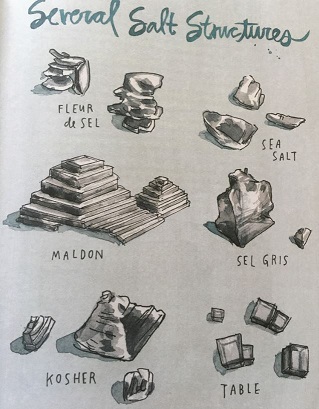
Appendix 2
Various salts and their weights
Source: Cooking Light magazine March 2013. The truth about salt in your food, by Sidney Fry, MS, RD.
¼ teaspoon of each salt – showing there is similar sodium chloride in each, although their weights will all vary depending on whether they are light and flaky or finer and denser.
